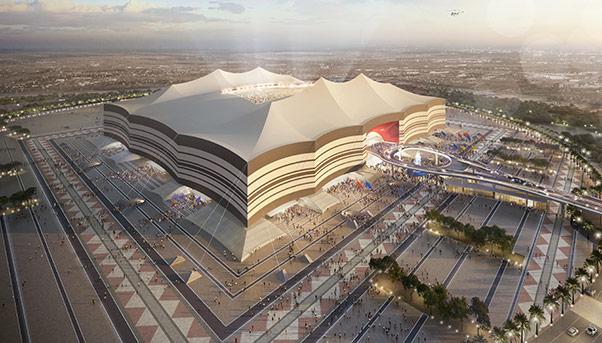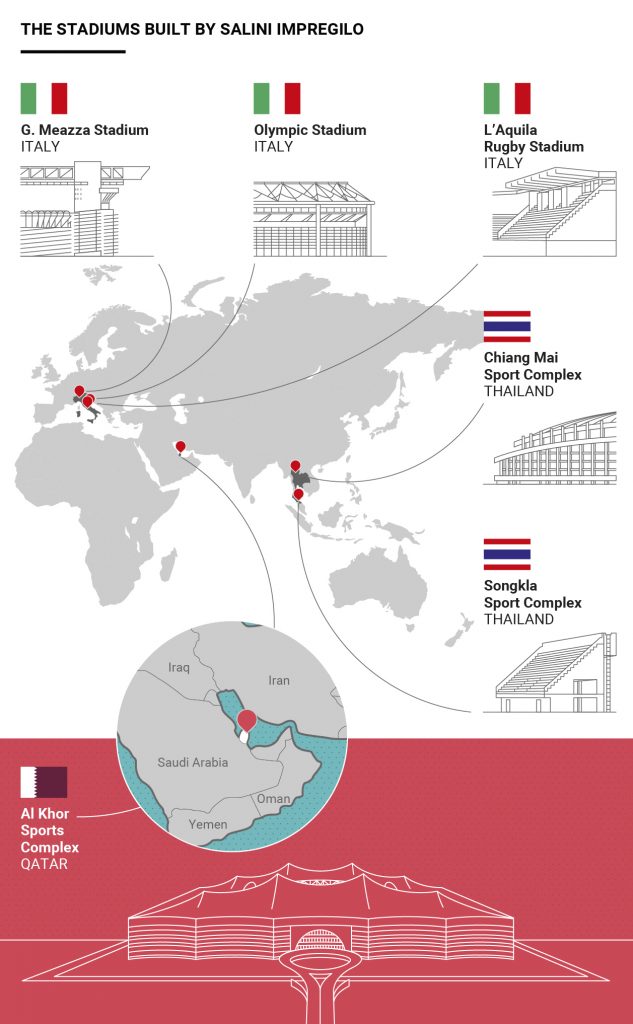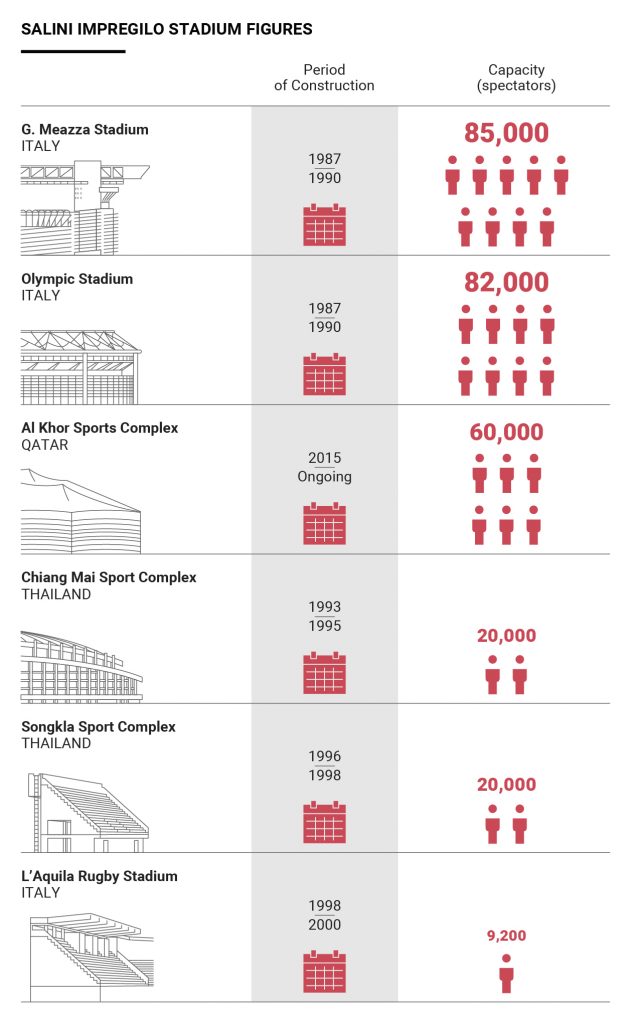
When the Boca Juniors soccer team players take the field, fans at the Bombonera (as the Alberto J. Armando stadium in Buenos Aires is called) show their appreciation by showering them with toilet paper rolls and by setting off fireworks.
This welcome lavished on the Argentinian capital’s home team may be one of the world’s most representative rituals taking place in what have become veritable modern temples to the sport: big stadiums around the world, those grand containers of emotion built in ever-more futuristic structures, designed to fuel a passion for sports and transform a fan’s individual joy into a collective delirium.
Ever since the days when gladiators fought to the death in the Colosseum, the stadium has always been the symbol of a game transformed into a serious matter; entertainment can become culture, “bread and circuses” can take the place of politics. And today, despite the evolution of design and technology that makes infrastructure more fascinating and complex, their symbolic value has remained the same.
The Al Bayt stadium that Salini Impregilo is building in Qatar is a good example. This facility is designed to look like an Arab desert tent, reflecting the traditional message of welcome to travellers, and it will become one of the sports complexes that will host selected matches during the FIFA World Cup in 2022.

World famous soccer stadiums
Stadiums began their transformation from basic structures to architectural works defined by lofty symbolic and aesthetic value long before Qatar began making the huge investments it needs to get ready for the 2022 World Cup.
The driving force behind this transformation are the so-called “starchitects” – world-famous architects who want to leave their mark on the city landscape – who started accepting commissions for sports facilities.
One of the first examples was Renzo Piano, who designed the San Nicola stadium in Bari for Italy’s 1990 World Cup. Walking forward in time, no one who loves sports and entertainment in general could forget Norman Foster’s design for Wembley Stadium. This gigantic infrastructure unveiled in 2007 can seat 90,000 people and cost more than €900 million, soon becoming a reference point for soccer, sports in general, and live music.
The race to build new stadiums has exploded only in recent years. The Bordeaux stadium was opened in 2015. Designed by Jacques Herzog and Pierre de Meuron – the same architects who did the “bird’s nest” stadium that hosted the Beijing Olympics in 2008 – it immediately won the ArchDaily award for the world’s best sports facility. Atletico Madrid’s new stadium designed by Spanish architects Antonio Cruz Villalón and Antonio Ortiz Garcia opened in recent months, and the official start to the construction of AS Roma’s new stadium inspired by the Colosseum should get the green light soon.
The 2022 World Cup in Qatar is shaping up to be a new chapter, where stadium construction has become a huge infrastructure challenge fought on the terrain of elegance, innovation, and environmental sustainability. All of these aspects are highlighted in the ambitious Al Bayt Stadium project underway just 40 kilometres from Doha.

The example of Al Bayt Stadium
The Al Bayt Stadium is going up in the city of Al Khor, located a few kilometres from the coast, built by a consortium that includes Salini Impregilo. It will be finished by 2018 budgeted at 785 million dollars holding 60,000 spectators in a structure shaped like a Bayt al Sha’ar, or traditional Qatari tent – to represent the natural Arab inclination towards hospitality.
This “tent” is already on the way to becoming a sustainability champion.
The building is awaiting certification in the Global Sustainability Assessment System (GSAS), for both the Design & Built as well as the Construction phases: FIFA is aiming for a four-star rating (out of a maximum six stars) which guarantees the sustainability of the design over its entire life cycle from conception to building to final use.
The GSAS four-star rating is awarded by the Gulf Organization for Research & Development (GORD) and is obligatory in the North Africa and Middle East region (MENA). It is based on an extended conception of sustainability that goes beyond the traditional criteria of energy, efficiency and security to embrace further challenges like re-using the structure either in place or remotely; the development of local resources with particular regard for conservation of native plant and animal species; the development of the local economy; but also protection of local culture, roots and traditions.
Thus innovation, technological excellence, and extremely modern design meld with tradition. It’s not by chance that the stadium is being built on ground raised 14 meters from sea level, in keeping with the Arab tradition of hoisting tents at the top of a hill so that they are easier for travellers to spot and seek shelter.
Moreover, just like the tent created by Arab nomads, the stadium too was designed to be partly taken apart and re-assembled elsewhere.
Once the World Cup is over, the stadium’s capacity will be reduced by nearly half to 32,000 seats. Part of it will be converted to a hotel and inside will be a shopping centre and other retail businesses, with the upper rings will be taken apart and donated to developing countries that need sports infrastructure.
Salini Impregilo and a passion for big stadiums
Over the past 30 years, the Salini Impregilo Group has built numerous big stadiums across the globe, making them a reference point for sports lovers in Europe, Asia and Africa. This is particularly true in Italy, where the group took part in the renovation of two of the country’s most important stadiums: Rome’s Olympic Stadium and the Giuseppe Meazza stadium in Milan. Both were rebuilt nearly from scratch for Italy’s 1990 World Cup. The Olympic Stadium’s capacity was increased to 82,000 from 54,000 achieved by moving the curved sections at the ends and by rebuilding one of the premium seating areas. In Milan, the
stadium was upgraded with a third ring of seats, bringing it to 85,000 and confirming its title as the “temple of football” bestowed on it by the multitude of sports fans.


